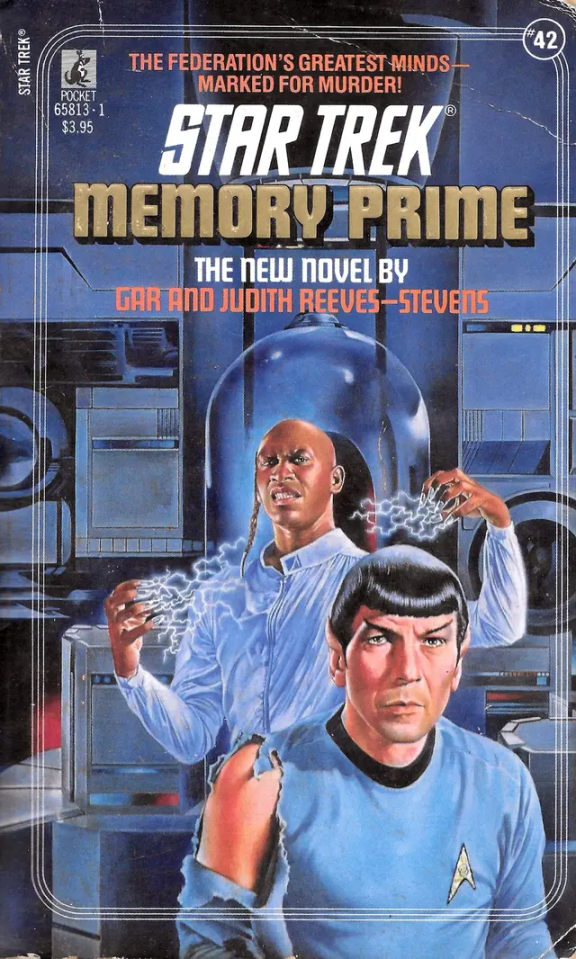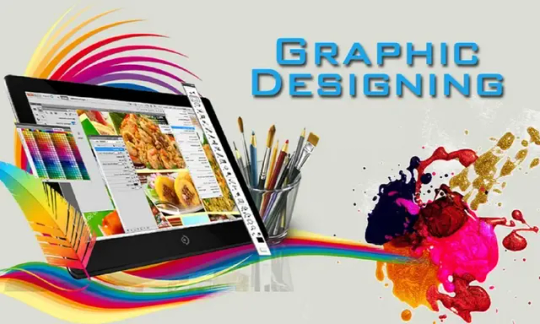#Enterprise-level web development
Explore tagged Tumblr posts
Text
This blog provides a brief overview of React JS and its advantages for enterprise-level web development. It highlights React JS's scalability, performance, reusability, ease of use, and mobile compatibility, and how it can improve the user experience of web applications while reducing development time and increasing developer productivity. The blog also recommends Hauper Technologies as a leading provider of enterprise-level web development services that utilize React JS and other modern technologies to deliver exceptional results.
#React JS#Enterprise-level web development#Scalability#Performance#Reusability#Mobile compatibility#User experience#Time-to-market#Developer productivity#Hauper Technologies
1 note
·
View note
Text
By David Brooks
Opinion Columnist
You might have seen the various data points suggesting that Americans are losing their ability to reason.
The trend starts with the young. The percentage of fourth graders who score below basic in reading skills on the National Assessment of Educational Progress tests is the highest it has been in 20 years. The percentage of eighth graders below basic was the highest in the exam’s three-decade history. A fourth grader who is below basic cannot grasp the sequence of events in a story. An eighth grader can’t grasp the main idea of an essay or identify the different sides of a debate.
Tests by the Program for the International Assessment of Adult Competencies tell a similar story, only for older folks. Adult numeracy and literacy skills across the globe have been declining since 2017. Tests from the Organization for Economic Cooperation and Development show that test scores in adult literacy have been declining over the past decade.
Andreas Schleicher, the head of education and skills at the O.E.C.D., told The Financial Times, “Thirty percent of Americans read at a level that you would expect from a 10-year-old child.” He continued, “It is actually hard to imagine — that every third person you meet on the street has difficulties reading even simple things.”
This kind of literacy is the backbone of reasoning ability, the source of the background knowledge you need to make good decisions in a complicated world. As the retired general Jim Mattis and Bing West once wrote, “If you haven’t read hundreds of books, you are functionally illiterate, and you will be incompetent, because your personal experiences alone aren’t broad enough to sustain you.”
Nat Malkus of the American Enterprise Institute emphasizes that among children in the fourth and eighth grades, the declines are not the same across the board. Scores for children at the top of the distribution are not falling. It’s the scores of children toward the bottom that are collapsing. The achievement gap between the top and bottom scorers is bigger in America than in any other nation with similar data.
There are some obvious contributing factors for this general decline. Covid hurt test scores. America abandoned No Child Left Behind, which put a lot of emphasis on testing and reducing the achievement gap. But these declines started earlier, around 2012, so the main cause is probably screen time. And not just any screen time. Actively initiating a search for information on the web may not weaken your reasoning skills. But passively scrolling TikTok or X weakens everything from your ability to process verbal information to your working memory to your ability to focus. You might as well take a sledgehammer to your skull.
My biggest worry is that behavioral change is leading to cultural change. As we spend time on our screens, we’re abandoning a value that used to be pretty central to our culture — the idea that you should work hard to improve your capacity for wisdom and judgment all the days of your life. That education, including lifelong out-of-school learning, is really valuable.
This value is based on the idea that life is filled with hard choices: whom to marry, whom to vote for, whether to borrow money. Your best friend comes up to you and says, “My husband has been cheating on me. Should I divorce him?” To make these calls, you have to be able to discern what is central to the situation, envision possible outcomes, understand other minds, calculate probabilities.
To do this, you have to train your own mind, especially by reading and writing. As Johann Hari wrote in his book “Stolen Focus,” “The world is complex and requires steady focus to be understood; it needs to be thought about and comprehended slowly.” Reading a book puts you inside another person’s mind in a way that a Facebook post just doesn’t. Writing is the discipline that teaches you to take a jumble of thoughts and cohere them into a compelling point of view.
Know someone who would want to read this? Share the column.
Americans had less schooling in decades past, but out of this urge for intellectual self-improvement, they bought encyclopedias for their homes, subscribed to the Book of the Month Club and sat, with much longer attention spans, through long lectures or three-hour Lincoln-Douglas debates. Once you start using your mind, you find that learning isn’t merely calisthenics for your ability to render judgment; it’s intrinsically fun.
But today one gets the sense that a lot of people are disengaging from the whole idea of mental effort and mental training. Absenteeism rates soared during the pandemic and have remained high since. If American parents truly valued education would 26 percent of students have been chronically absent during the 2022-23 school year?
In 1984, according to the National Center for Education Statistics, 35 percent of 13-year-olds read for fun almost every day. By 2023, that number was down to 14 percent. The media is now rife with essays by college professors lamenting the decline in their students’ abilities. The Chronicle of Higher Education told the story of Anya Galli Robertson, who teaches sociology at the University of Dayton. She gives similar lectures, assigns the same books and gives the same tests that she always has. Years ago, students could handle it; now they are floundering.
Last year The Atlantic published an essay by Rose Horowitch titled “The Elite College Students Who Can’t Read Books.” One professor recalled the lively classroom discussions of books like “Crime and Punishment.” Now the students say they can’t handle that kind of reading load.
The philosophy professor Troy Jollimore wrote in The Walrus: “I once believed my students and I were in this together, engaged in a shared intellectual pursuit. That faith has been obliterated over the past few semesters. It’s not just the sheer volume of assignments that appear to be entirely generated by A.I. — papers that show no sign the student has listened to a lecture, done any of the assigned reading or even briefly entertained a single concept from the course.”
Older people have always complained about “kids these days,” but this time we have empirical data to show that the observations are true.
What happens when people lose the ability to reason or render good judgments? Ladies and gentlemen, I present to you Donald Trump’s tariff policy. I’ve covered a lot of policies over the decades, some of which I supported and some of which I opposed. But I have never seen a policy as stupid as this one. It is based on false assumptions. It rests on no coherent argument in its favor. It relies on no empirical evidence. It has almost no experts on its side — from left, right or center. It is jumble-headedness exemplified. Trump himself personifies stupidity’s essential feature — self-satisfaction, an inability to recognize the flaws in your thinking. And of course when the approach led to absolutely predictable mayhem, Trump, lacking any coherent plan, backtracked, flip-flopped, responding impulsively to the pressures of the moment as his team struggled to keep up.
Producing something this stupid is not the work of a day; it is the achievement of a lifetime — relying on decades of incuriosity, decades of not cracking a book, decades of being impervious to evidence.
Back in Homer’s day, people lived within an oral culture, then humans slowly developed a literate culture. Now we seem to be moving to a screen culture. Civilization was fun while it lasted.
29 notes
·
View notes
Text
crowdstrike: hot take 1
It's too early in the news cycle to say anything truly smart, but to sum things up, what I know so far:
there was no "hack" or cyberattack or data breach*
a private IT security company called CrowdStrike released a faulty update which practically disabled all its desktop (?) Windows workstations (laptops too, but maybe not servers? not sure)
the cause has been found and a fix is on the way
as it stands now, the fix will have to be manually applied (in person) to each affected workstation (this could mean in practice maybe 5, maybe 30 minutes of work for each affected computer - the number is also unknown, but it very well could be tens (or hundreds) of thousands of computers across thousands of large, multinational enterprises.
(The fix can be applied manually if you have a-bit-more-than-basic knowledge of computers)
Things that are currently safe to assume:
this wasn't a fault of any single individual, but of a process (workflow on the side of CrowdStrike) that didn't detect the fault ahead of time
[most likely] it's not that someone was incompetent or stupid - but we don't have the root cause analysis available yet
deploying bugfixes on Fridays is a bad idea
*The obligatory warning part:
Just because this wasn't a cyberattack, doesn't mean there won't be related security breaches of all kinds in all industries. The chaos, panic, uncertainty, and very soon also exhaustion of people dealing with the fallout of the issue will create a perfect storm for actually malicious actors that will try to exploit any possible vulnerability in companies' vulnerable state.
The analysis / speculation part:
globalization bad lol
OK, more seriously: I have not even heard about CrowdStrike until today, and I'm not a security engineer. I'm a developer with mild to moderate (outsider) understanding of vulnerabilities.
OK some background / basics first
It's very common for companies of any size to have more to protect their digital assets than just an antivirus and a firewall. Large companies (Delta Airlines) can afford to pay other large companies to provide security solutions for them (CrowdStrike). These days, to avoid bad software of any kind - malware - you need a complex suite of software that protects you from all sides:
desktop/laptop: antivirus, firewall, secure DNS, avoiding insecure WiFi, browser exploits, system patches, email scanner, phishing on web, phishing via email, physical access, USB thumb drive, motherboard/BIOS/UEFI vulnerabilities or built-in exploits made by the manufacturers of the Chinese government,
person/phone: phishing via SMS, phishing via calls, iOS/Android OS vulnerabilities, mobile app vulnerabilities, mobile apps that masquerade as useful while harvesting your data, vulnerabilities in things like WhatsApp where a glitched JPG pictures sent to you can expose your data, ...
servers: mostly same as above except they servers have to often deal with millions of requests per day, most of them valid, and at least some of the servers need to be connected to the internet 24/7
CDN and cloud services: fundamentally, an average big company today relies on dozens or hundreds of other big internet companies (AWS / Azure / GCP / Apple / Google) which in turn rely on hundreds of other companies to outsource a lot of tasks (like harvesting your data and sending you marketing emails)
infrastructure - routers... modems... your Alexa is spying on you... i'm tired... etc.
Anyway if you drifted to sleep in the previous paragraph I don't blame you. I'm genuinely just scratching the surface. Cybersecurity is insanely important today, and it's insanely complex too.
The reason why the incident blue-screened the machines is that to avoid malware, a lot of the anti-malware has to run in a more "privileged" mode, meaning they exist very close to the "heart" of Windows (or any other OS - the heart is called kernel). However, on this level, a bug can crash the system a lot more easily. And it did.
OK OK the actual hot lukewarm take finally
I didn't expect to get hit by y2k bug in the middle of 2024, but here we are.
As bad as it was, this only affected a small portion of all computers - in the ballpark of ~0.001% or even 0.0001% - but already caused disruptions to flights and hospitals in a big chunk of the world.
maybe-FAQ:
"Oh but this would be avoided if they weren't using the Crowdwhatever software" - true. However, this kind of mistake is not exclusive to them.
"Haha windows sucks, Linux 4eva" - I mean. Yeah? But no. Conceptually there is nothing that would prevent this from happening on Linux, if only there was anyone actually using it (on desktop).
"But really, Windows should have a better protection" - yes? no? This is a very difficult, technical question, because for kernel drivers the whole point is that 1. you trust them, and 2. they need the super-powerful-unrestrained access to work as intended, and 3. you _need_ them to be blazing fast, so babysitting them from the Windows perspective is counterproductive. It's a technical issue with no easy answers on this level.
"But there was some issue with Microsoft stuff too." - yes, but it's unknown if they are related, and at this point I have not seen any solid info about it.
The point is, in a deeply interconnected world, it's sort of a miracle that this isn't happening more often, and on a wider scale. Both bugfixes and new bugs are deployed every minute to some software somewhere in the world, because we're all in a rush to make money and pay rent and meet deadlines.
Increased monoculture in IT is bad for everyone. Whichever OS, whichever brand, whichever security solution provider - the more popular they are, the better visible their mistakes will be.
As much as it would be fun to make jokes like "CrowdStroke", I'm not even particularly mad at the company (at this point - that might change when I hear about their QA process). And no, I'm not even mad at Windows, as explained in the pseudo-FAQ.
The ultimate hot take? If at all possible, don't rely on anything related to computers. Technical problems are caused by technical solutions.
#crowdstrike#cybersecurity#anyway i'm microdosing today so it's probably too boring to read#but hopefully it at least mostly made sense#to be honest I wanted to have more of a hot take#but the truth is mundane
74 notes
·
View notes
Text
"Memory Prime" review

Novel from 1988, by Garfield and Judith Reeves-Stevens. It's strange that the title says "the new novel by...", since as far as I know, this was the first Star Trek book of these authors. Chaotic, crazy, convoluted, at times campy and hard to follow, it's also a lot of fun. Even the cover is a "what-the-fuck" moment, with that Spock looking tiredly at the viewer, wearing the trademark Kirk-ripped-shirt.
The story mixes several TOS elements: a conspiracy to kill someone aboard the Enterprise; a mission to rescue Spock that puts everyone's careers in danger; and an obnoxious Commodore that hinders the heroes' efforts. All mixed and enhanced to cinematic level. Apart from all that, the novel expands on the story from "The Lights of Zetar", showing the aftermath of Memory Alpha's destruction. And has Mira Romaine (the guest from that episode) as one of the main characters.
The titular Memory Prime is the new center of knowledge and research for the Federation, and the main node in a network of similar centers, each in a different asteroid. Selected as the place to hold the Nobel prizes, the Enterprise is tasked with bringing scientists from all over the Federation to the ceremony. But things get awry when Starfleet intelligence discovers that one or more of the scientists are targeted for assassination. And to everybody's surprise, the main suspect is... Spock!! On top of that, Starfleet has lost confidence in Kirk, and orders a Commodore to take over the Enterprise during the emergency. So Kirk now has to recover both his First Officer and his ship, while confronted with a thickening web of conspiracy. There's something of pulp fiction about the cackling villains, killer robots, and constant plot twists and cliffhangers. But surprisingly, there's also an element of more serious science fiction, with the introduction of the Pathfinders (artificial intelligences that have developed their own worldview), and the discussions about computer science. The chapters dealing with the Pathfinders show a fascinating and alien perspective, that may very well be classified as "cyberpunk". It's possible that something of this owes more to TNG than TOS. The final reveal about who was behind the assassination, the real target of it, and the motives, were actually unexpected.
As for the characters, Kirk gets the spotlight and most heroic deeds (so it's no wonder that these same authors got to co-write the Shatnerverse novels later). And of course Spock is central to the plot, though absent during a good chunk of the story. But Scotty also gets a larger-than-usual role, and picks up his romance with Romaine. While Uhura has one of her most badass moments when confronting the Commodore. Also, everyone has crazy, crazy fight scenes: from Kirk defeating a robot with bullfighter techniques (and utterly annihilating his shirt in the process), to Spock locking in a mind-meld combat, or McCoy... attacking with hypos.
In summary, a pretty exciting action adventure, with humorous scenes that are actually funny, and some food-for-thought concerning AI and the fainting distinction between human and machine. Even if the plot can get messy and even ridiculous at times.
Spirk Meter: 9/10*. Kirk is really distressed by Spock's framing and incarceration, and spends most of the novel focused on rescuing him no matter what. Even if this means the end of his career and losing the Enterprise; Spock comes as his first priority. He doesn't doubt his innocence for a moment, either, while others in the crew have some reservations. And whenever Spock's in physical danger, Kirk is the first to jump to protect him (even if he himself is a wreck). Kirk is also the only one who truly seems to understand Spock, he can anticipate his thoughts and see his logic, where others only see crazyness. Besides, there's a scene where Kirk faints, and the first thing he says upon waking up is "Spock, Spock...?". And yeah, Spock is there, hovering over him and pushing him gently to lie back in bed.
Though this is clearly a spirky novel and McCoy has a lesser role, there are a few moments with him too. At the beginning, both he and Kirk devise a convoluted plan to keep Spock in the dark about the Nobel ceremony, in the hopes of seeing him smile or at least react when the surprise is revealed. While at the end, McCoy wants to know EVERYTHING about Spock's years in the Academy, once he learns from one of his teachers that he was a bit of a "class clown" back then (for Vulcan standards). And despite Spock's apparent annoyance, Kirk notices a warm expression on him, because of the doctor's antics. Kirk also jumps in front of McCoy and Spock to take a lethal phaser shot instead of them. With the hilarious result that the shot wasn't neither that lethal, nor he took it all that well, considering both Spock and McCoy also end up groaning in bed after a stun.
*A 10 in this scale is the most obvious spirk moments in TOS. Think of the back massage, "You make me believe in miracles", or "Amok Time" for example.
37 notes
·
View notes
Text
Best IT Courses In Bhubaneswar:- seeree services pvt ltd.
Introduction:- seeree is one of the best IT training institute and Software industry, features completely Industrial training on Python , PHP , .NET , C Programming,Java , IOT , AI , GD PI , ORACLE and ALL CERTIFICATION COURSES as well as provides seminar,cultural activity and jobs
Courses we provided:- 1) Java Fullstack 2) Python Fullstack 3) PHP Fullstack 4) Preplacement Training & Sp. Eng 5) .NET Fulstack 6) SEO/Digital Marketing 7) SAP 8) MERN 9) Software Testing 10)Data Analyst 11)Data Science 12)Data Engineering 13)PGDCA 14)Tally 15)Graphics Design
Course1:- Java Fullstack

A Class in Java is where we teach objects how to behave. Education at seeree means way to success. The way of teaching by corporate trainers will bloom your career. We have the best java training classes in Bhubaneswar. 100% Placement Support. Job Support Post Training. This course will give you a firm foundation in Java, commonly used programming language. Java technology is wide used currently. Java is a programming language and it is a platform. Hardware or software environment in which a program runs, known as a platform. Since Java has its own Runtime Environment (JRE) and API, it is called platform. Java programming language is designed to meet the challenges of application development in the context of heterogeneous, network-wide distributed environment. Java is an object-oriented programming (OOP) language that uses many common elements from other OOP languages, such as C++. Java is a complete platform for software development. Java is suitable for enterprise large scale applications.]
Course2:- Python Fullstack

Seeree offers best python course in Bhubaneswar with 100% job assurance and low fee. Learn from real time corporate trainers and experienced faculties. Groom your personality with our faculty. Seeree helps to build confidence in students to give exposure to their skills to the company.
Python is dynamically typed , compiled and interpreted , procedural and object oriented , generalized , general-purpose , platform independent programming language. Python is a high-level, structured, open-source programming language that can be used for a wide variety of programming tasks.
Course3:- PHP Fullstack

seeree is the best training institute which provide PHP Training courses in bhubaneswar and all over odisha We aim the students to learn and grow altogether with the need of IT firms.
PHP is a server scripting language, and a powerful tool for making dynamic and interactive Web pages. PHP is a widely-used, free, and efficient alternative to competitors such as Microsoft's ASP.
Course4:- Preplacement Training & Sp. Eng

Welcome to SEEREE Institute, where excellence meets opportunity. At SEEREE, we are dedicated to providing a transformative learning experience that empowers students to achieve their goals and contribute to a brighter future.
Our institute offers cutting-edge courses designed to meet the needs of the ever-evolving global landscape. With a team of highly qualified instructors and state-of-the-art facilities, we ensure a supportive and inspiring environment for learning and growth.
Whether you're here to develop new skills, explore innovative fields, or pursue personal and professional success, SEEREE Institute is the perfect place to begin your journey. Thank you for choosing us, and we look forward to being a part of your success story.
Course5:- .NET Fullstack

Seeree offers best .NET course in Bhubaneswar with 100% job assurance and low fee. Learn from real time corporate trainers and experienced faculties. Groom your personality with our faculty. Seeree helps to build confidence in students to give exposure to their skills to the company.
Course6:- SEO/Digital Marketing

In today's fast-paced digital world, businesses thrive on visibility, engagement, and strategic online presence. At SEEREE, we empower you with the skills and knowledge to master the art of Search Engine Optimization (SEO) and Digital Marketing.
Our comprehensive program is designed for beginners and professionals alike, covering everything from keyword research, on-page and off-page SEO, and content marketing, to social media strategies, PPC campaigns, and analytics.
With hands-on training, real-world projects, and guidance from industry experts, we ensure you're equipped to drive measurable results and excel in this dynamic field.
Join us at SEEREE Institute and take the first step towards becoming a leader in the digital marketing landscape!"
Course7:- SAP

SAP refers to Systems, Applications, and Products in Data Processing. Some of the most common subjects covered in these courses include human resource software administration, database management, and business training. Obtaining SAP certification can be done on a stand-alone basis or as part of a degree program.
Course8:- MERN

Seeree offers the best MERN course in Bhubaneswar with 100% job assurance and low fees. Learn from real-time corporate trainers and experienced faculty. Seeree helps students build confidence and gain skills to excel in company roles.
Are you ready to step into the exciting world of web development? At SEEREE, we bring you a comprehensive MERN Stack course that equips you with the skills to build modern, dynamic, and responsive web applications from start to finish.
The MERN Stack—comprising MongoDB, Express.js, React.js, and Node.js—is one of the most sought-after technologies in the web development industry. Our program is designed to help you master each component of the stack, from creating robust backends and managing databases to crafting dynamic frontends and seamless APIs.
Course9:- Software Testing

Seeree offers best Testing course in Bhubaneswar with 100% job assurance and low fee. Learn from real time corporate trainers and experienced faculties. Groom your personality with our faculty. Seeree helps to build confidence in students to give exposure to their skills to the company.
In the fast-paced world of software development, ensuring the quality and reliability of applications is crucial. At SEEREE, we offer a comprehensive Software Testing course designed to equip you with the skills and techniques needed to excel in this essential field.
Our program covers all aspects of software testing, from manual testing fundamentals to advanced automation tools and frameworks like Selenium, JIRA, and TestNG. You’ll learn to identify bugs, write test cases, execute test scripts, and ensure software meets high-quality standards.
With hands-on training, real-world scenarios, and guidance from experienced industry professionals, you’ll be prepared to take on roles like Quality Assurance Engineer, Test Analyst, and Automation Tester.
Join SEEREE Institute and gain the expertise to become a key player in delivering flawless software solutions. Your journey to a rewarding career in software testing starts here!"
Course10:- Data Analyst

Seeree offers the best Data Analyst course in Bhubaneswar with 100% job assurance and affordable fees. Our comprehensive curriculum is designed to cover all aspects of data analysis, from data collection and cleaning to advanced data visualization techniques. Learn from real-time corporate trainers and experienced faculty members who bring industry insights into the classroom. Enhance your analytical skills and boost your career prospects with hands-on projects and real-world case studies. Our faculty also focuses on grooming your personality and soft skills, ensuring you are well-prepared for interviews and workplace environments. Seeree is dedicated to building confidence in students, providing them with the necessary exposure to showcase their skills to top companies in the industry.
Course11:- Data Science

Seeree offers the best Data Science course in Bhubaneswar with 100% job assurance and affordable fees. Our comprehensive curriculum is designed to cover all aspects of data science, from data collection and cleaning to advanced data visualization techniques. Learn from real-time corporate trainers and experienced faculty members who bring industry insights into the classroom. Enhance your analytical skills and boost your career prospects with hands-on projects and real-world case studies. Our faculty also focuses on grooming your personality and soft skills, ensuring you are well-prepared for interviews and workplace environments. Seeree is dedicated to building confidence in students, providing them with the necessary exposure to showcase their skills to top companies in the industry.
Course12:- Data Engineering

In the era of big data, the ability to design, build, and manage scalable data infrastructure is one of the most in-demand skills in the tech industry. At SEEREE, we are proud to offer a comprehensive Data Engineering course that prepares you for a career at the forefront of data-driven innovation.
Our program covers essential topics such as data modeling, ETL processes, data warehousing, cloud platforms, and tools like Apache Spark, Kafka, and Hadoop. You’ll learn how to collect, organize, and transform raw data into actionable insights, enabling businesses to make smarter decisions.
With real-world projects, expert mentorship, and hands-on experience with the latest technologies, we ensure that you are industry-ready. Whether you’re starting fresh or upskilling, this program will empower you to unlock opportunities in the rapidly growing field of data engineering.
Join SEEREE Institute and take the first step toward building the data pipelines that power tomorrow’s technology!"
Course13:- PGDCA

Seeree offers the best MERN course in Bhubaneswar with 100% job assurance and low fees. Learn from real-time corporate trainers and experienced faculty. Seeree helps students build confidence and gain skills to excel in company roles.
In today’s digital age, computer applications are at the heart of every industry, driving innovation and efficiency. At SEEREE Institute, our Post Graduate Diploma in Computer Applications (PGDCA) program is designed to provide you with in-depth knowledge and hands-on skills to excel in the IT world.
This program offers a comprehensive curriculum covering programming languages, database management, web development, software engineering, networking, and more. Whether you aim to enhance your technical expertise or step into a rewarding career in IT, PGDCA at SEEREE equips you with the tools to succeed.
With expert faculty, state-of-the-art labs, and real-world projects, we ensure that you gain practical experience and a strong theoretical foundation. By the end of the program, you’ll be prepared for roles such as software developer, system analyst, IT manager, or database administrator.
Course14:- Tally

Seeree offers the best Tally course in Bhubaneswar with 100% job assurance and low fees. Learn from real-time corporate trainers and experienced faculty. Seeree helps students build confidence and gain skills to excel in company roles.
In today’s business world, efficient financial management is key to success, and Tally is one of the most trusted tools for accounting and financial operations. At SEEREE Institute, we offer a comprehensive Tally course designed to equip you with the skills needed to manage business finances effortlessly.
Our program covers everything from the basics of accounting and bookkeeping to advanced features like GST compliance, inventory management, payroll processing, and generating financial reports. With hands-on training and real-world applications, you’ll gain practical expertise in using Tally effectively for businesses of any scale.
Whether you're a student, a professional, or a business owner, our Tally program is tailored to meet your needs and enhance your career prospects in the fields of accounting and finance.
Course15:- Graphics Design

In the world of creativity and communication, graphic design plays a vital role in bringing ideas to life. At SEEREE Institute, our Graphic Design course is tailored to help you unlock your creative potential and master the art of visual storytelling.
Our program covers a wide range of topics, including design principles, color theory, typography, branding, and user interface design. You’ll gain hands-on experience with industry-standard tools like Adobe Photoshop, Illustrator, and InDesign, enabling you to create stunning visuals for print, digital media, and beyond.
Whether you're an aspiring designer or a professional looking to sharpen your skills, our expert trainers and real-world projects will provide you with the knowledge and confidence to excel in this competitive field.
Join SEEREE Institute and start your journey toward becoming a skilled graphic designer. Let’s design your future together!"
2 notes
·
View notes
Text
When deciding between Laravel and Symfony, it's essential to consider your project needs. Laravel shines with its user-friendly syntax and extensive out-of-the-box functionalities, making it ideal for rapid development and handling common web application tasks with ease. Its vibrant community and ecosystem offer a wide range of packages, which can be a huge time-saver for developers looking to implement complex features quickly.
On the other hand, Symfony is known for its robustness, flexibility, and scalability, making it a preferred choice for large, enterprise-level applications. With a component-based architecture, Symfony allows developers to pick and choose components, making it highly customizable. If you value performance and long-term support, Symfony might be the better choice, while Laravel is perfect for projects needing fast deployment and intuitive development.
2 notes
·
View notes
Text
WordPress | Sunshine Coast Web Design
Are you looking to build a website that’s not only beautiful but also functional and easy to manage? Look no further than WordPress development! At Sunshine Coast Web Design, we specialize in crafting custom WordPress solutions tailored to your unique business needs. Let’s dive into how WordPress can transform your online presence!
Why WordPress?
WordPress is one of the most popular content management systems in the world, and for good reason. It’s incredibly flexible, user-friendly, and SEO-friendly, making it a top choice for businesses of all sizes. Whether you're a small local shop or a growing enterprise, WordPress offers endless customization options and a vast array of plugins that can enhance your site’s functionality.
Customization Tailored to You
At Sunshine Coast Web Design, we don’t believe in one-size-fits-all solutions. Our team works closely with you to understand your goals and develop a WordPress website that reflects your brand and vision. From custom themes to advanced functionalities, we ensure that your website stands out and performs ef ficiently across all devices.
SEO-Friendly for Maximum Visibility
Your website is only as good as the traffic it generates. With WordPress, you have a built-in SEO advantage. Our WordPress development services include optimizing your website for search engines, ensuring that your business ranks higher on Google and other search platforms. Reach your target audience faster and increase your visibility with a site designed to perform!
Easy-to-Manage Content Updates
One of the biggest advantages of WordPress is its user-friendly backend. You don’t need to be a coding expert to update your website’s content! With our training and support, you can easily manage blogs, update product pages, and make minor adjustments to keep your website fresh and engaging.
Let’s Build Your Dream Website Together
Ready to take your online presence to the next level? Sunshine Coast Web Design is here to make it happen. Whether you're starting from scratch or looking to upgrade an existing site, we’ve got the expertise to deliver. Contact us today and let’s start building something amazing!
Contact Us Today!
🌐 : https://sunshinecoastwebdesign.com.au/
☎: +61 418501122
🏡: 32 Warrego Drive Pelican Waters Sunshine Coast QLD, 4551 Australia
2 notes
·
View notes
Text
The History of Java Programming: From Its Humble Beginnings to Dominance in Software Development
Java is one of the most influential programming languages in the modern era, known for its versatility, portability, and robustness. Developed in the early 1990s, it has left a lasting impact on the software industry, helping build countless applications, from mobile games to enterprise-level software. In this blog, we'll explore Java’s fascinating history, its motivations, its growth, and its influence on today’s technology landscape.
The Genesis of Java
Java originated in the early 1990s as part of a project at Sun Microsystems. The project, initially called the "Green Project," was led by James Gosling, alongside Mike Sheridan and Patrick Naughton. The team's goal was to develop a language for embedded systems, specifically for appliances like televisions, which were beginning to incorporate smart technology.
The language was initially called "Oak," named after an oak tree outside Gosling's office. However, due to a trademark conflict, it was eventually renamed Java. The name "Java" was inspired by a type of coffee popular with the developers, signifying their relentless energy and drive.
Motivation Behind Java's Creation
Java was developed to address several key challenges in software development at the time:
Portability: Most languages of the day, such as C and C++, were platform-dependent. This meant that software needed significant modification to run on different operating systems. Gosling and his team envisioned a language that could be executed anywhere without alteration. This led to the now-famous slogan, "Write Once, Run Anywhere" (WORA).
Reliability: C and C++ were powerful, but they had pitfalls like manual memory management and complex pointers, which often led to errors. Java aimed to eliminate these issues by offering features like automatic memory management through garbage collection.
Internet Revolution: As the internet began to take shape, Java was positioned to take advantage of this growing technology. Java’s platform independence and security made it an ideal choice for internet-based applications.
The Birth of Java (1995)
The Green Project initially produced a device called Star7, an interactive television set-top box. While innovative, it didn't achieve widespread success. However, by the mid-1990s, the internet was gaining traction, and Sun Microsystems realized Java’s true potential as a programming language for web applications.
In 1995, Java was officially launched with the release of the Java Development Kit (JDK) 1.0. At the same time, Netscape Navigator, a popular web browser, announced that it would support Java applets. This gave Java immense exposure and set the stage for its rapid adoption in the software development community.
Key Features that Set Java Apart
From the beginning, Java had several features that distinguished it from its contemporaries:
Platform Independence: Java programs are compiled into an intermediate form called bytecode, which runs on the Java Virtual Machine (JVM). The JVM acts as a mediator between the bytecode and the underlying system, allowing Java programs to be executed on any platform without modification.
Object-Oriented: Java was designed from the ground up as an object-oriented language, emphasizing modularity, reusability, and scalability. This feature made Java particularly attractive for building complex and large-scale applications.
Automatic Memory Management: Java's garbage collector automatically handles memory deallocation, reducing the risk of memory leaks and other errors that plagued languages like C and C++.
Security: Java was designed with a focus on security, particularly given its intended use for internet applications. The JVM serves as a secure sandbox, and Java’s bytecode verification process ensures that malicious code cannot be executed.
Evolution of Java Versions
Since its release in 1995, Java has undergone several iterations, each bringing new features and improvements to enhance the developer experience and address the evolving needs of software applications.
Java 1.0 (1996): The first version of Java was mainly used for applets on web browsers. It came with basic tools, libraries, and APIs, establishing Java as a mainstream programming language.
Java 2 (1998): With the release of J2SE (Java 2 Platform, Standard Edition), Java evolved from a simple web language to a complete, general-purpose development platform. Java 2 introduced the Swing library, which provided advanced tools for building graphical user interfaces (GUIs). This release also marked the beginning of Java Enterprise Edition (J2EE), which extended Java for server-side applications.
Java 5 (2004): Java 5, initially called Java 1.5, was a significant update. It introduced Generics, Annotations, Enumerations, and Autoboxing/Unboxing. The updated version also brought improved syntax and functionality, which simplified writing and reading code.
Java SE 7 (2011) and Java SE 8 (2014): Java SE 7 brought features like try-with-resources, simplifying exception handling. Java SE 8 was a transformative release, introducing Lambda expressions and Stream APIs. This version brought functional programming aspects to Java, allowing developers to write more concise and expressive code.
Java 9 to Java 17 (2017-2021): Java 9 introduced the module system to help organize large applications. Java 11 and later versions moved towards a more rapid release cadence, with new features appearing every six months. Java 17, released in 2021, became a long-term support (LTS) version, offering several advancements like improved garbage collection, pattern matching, and record classes.
The Java Community and OpenJDK
Java's development has always been characterized by a strong community influence. Initially controlled by Sun Microsystems, Java's fate changed when Oracle Corporation acquired Sun in 2010. After the acquisition, Oracle made significant strides towards making Java more open and community-driven.
OpenJDK, an open-source implementation of Java, became the reference implementation starting from Java 7. This move encouraged greater collaboration, transparency, and diversity within the Java ecosystem. OpenJDK allowed more organizations to contribute to Java’s development and ensure its continued growth.
Java in the Enterprise and Beyond
Java has become synonymous with enterprise-level software development, thanks in part to the introduction of Java EE (now known as Jakarta EE). Java EE provides a set of specifications and tools for building large-scale, distributed, and highly reliable applications. The Java ecosystem, including frameworks like Spring, Hibernate, and Apache Struts, has contributed to its popularity in enterprise environments.
Java also became a key player in the development of Android applications. Android Studio, Google's official IDE for Android development, is powered by Java, which contributed significantly to its widespread adoption. Although Kotlin, another JVM language, is now gaining popularity, Java remains a core language for Android.
The Challenges Java Faced
Despite its success, Java faced competition and challenges over the years. Languages like C#, developed by Microsoft, and Python have gained traction due to their developer-friendly features. Java has been criticized for its verbosity compared to more modern languages. However, the Java community’s active contributions and Oracle’s improvements, including adding modern programming paradigms, have kept it relevant.
Another significant challenge was the rise of JavaScript for web development. While Java was initially popular for web applets, JavaScript became the dominant language for front-end development. Java's relevance in web applications decreased, but it found its niche in server-side applications, enterprise systems, and Android.
Java Today and Its Future
Today, Java is one of the most popular programming languages globally, powering applications across various sectors, including finance, healthcare, telecommunications, and education. Java’s strength lies in its mature ecosystem, robust performance, and scalability.
The new six-month release cycle initiated by Oracle has brought excitement back into the Java world, with new features being added frequently, keeping the language modern and in line with developer needs. Java 17, as an LTS version, is a stable platform for enterprises looking for reliable updates and support over the long term.
Looking forward, Java’s evolution focuses on improving developer productivity, adding more concise language features, and optimizing performance. Java's adaptability and continuous evolution ensure its place as a leading language for both new projects and legacy systems.
Conclusion
Java’s journey from a language for set-top boxes to becoming a foundational tool in enterprise computing, Android applications, and beyond is nothing short of remarkable. Its creation was driven by a need for portability, reliability, and ease of use. Over nearly three decades, Java has evolved to remain relevant, keeping pace with technological advancements while preserving its core values of reliability and platform independence.
The language’s robust community, open-source development model, and wide adoption in critical applications guarantee that Java will remain a force in software development for many years to come. It has not only withstood the test of time but continues to thrive in a constantly changing technology landscape—an enduring testament to the vision of its creators and the collective effort of its global community.
2 notes
·
View notes
Text
Component Libraries: Should You Build Your Own or Use a Prebuilt One?

Component libraries are a vital tool in web application development in maintaining uniform design, shortening the time taken to develop web applications and improving reusability of the code. Some developers find this dilemma; should they create a component library or use an existing one? In addition, they help reduce the struggle while building well-designed and interactive websites because of the availability of animation-oriented UIs such as Accentricity UI among others. Now, let’s get more to the point in order to help you find the right way.
What is a Component Library?
Component libraries are collections of reusable UI elements such as buttons, forms, modals, and more— and are intended to reuse the components across several projects. Such libraries not only guarantee a consistent look of an application but also save time and costs during its implementation because the elements have been already coded. So, there's no need to build components from scratch.
Prebuilt Component Libraries

Prebuilt Component Libraries
Prebuilt component libraries are the ready-made collections of different UI components that are specifically designed and optimized for common use cases that developers can face during development. Some well-known examples include:
Material-UI (MUI):
A library based on React and it follows Google's Material-UI design, MUI allows a comprehensive set of components customization.
Ant Design:
It's an UI design system framework for enterprise-level products, ant design offers built-in themes and a rich set of UI components.
Bootstrap:
It's an widely-used CSS framework that provides basic components and a responsive grid system.
Pros of Prebuilt Libraries :
Rapid Development: Prebuilt libraries save a lot of time of the developers by providing pre-designed reusable components that you can quickly integrate into your project.
Standardized Design: They help ensure a consistent user experience across different screens and features.
Community Support: Many prebuilt libraries come with robust community support, providing a wealth of tutorials, plugins, and enhancements.
Cons of Prebuilt Libraries
Limited Customization: Customizing components to fit your unique design can sometimes be difficult, leading to constraints on flexibility.
Performance Overhead: Many prebuilt libraries come with extra features you may not need, which can bloat your codebase.

Pros And Cons of Prebuilt Libraries
Animation-Centric Libraries: Bringing UIs to Life
In recent years, a new category of libraries has emerged, specifically focused on providing built-in animations and smooth UI transitions. These libraries not only offer pre-designed components but also emphasize adding dynamic, interactive features to web applications.
Here are some popular examples of animation-focused libraries:
Lottie
Category: Animation Integration Library

Lottie:The industry standard for motion design
What it Offers: Lottie allows you to render animations created in Figma or Adobe After Effects as JSON files using the built-in plugins. These animations are then rendered natively on the web, offering high-quality motion without a heavy performance impact.
Why It’s Useful: Lottie is perfect for apps or websites requiring rich, scalable animations that are lightweight. It’s commonly used for logos, loading animations, and subtle UI effects. Unlike other component libraries, it focuses purely on bringing visual design elements from tools like Figma & After Effects into the web environment.
Accentricity UI
Category: Hybrid Component and Animation Library
What it Offers:
Accentricity UI combines traditional UI components with built-in support for smooth animations and transitions. It offers a wide range of components like buttons, forms, modals, and navigation menus, but with an added layer of predefined animations, making it easier to create interactive, dynamic interfaces.
In addition to these standard components, Accentricity UI provides responsive behaviors and subtle animation effects like hover states, fade-ins, and sliding transitions that enhance user engagement. The library's components are fully customizable, allowing developers to easily adjust animation timings, easing functions, and durations to match the look and feel of their brand, ensuring both visual appeal and performance across devices.
Why It’s Useful:
Think about it, what would be easy for a dev? Making a custom component with tons of animation which the dev has to write from scratch and polish it before the deadline or use a library, where the dev can make use of the library with the built-in support to combine the custom designed elements with smooth animations and transitions offered by the library.
It’s particularly helpful for developers who want the convenience of a prebuilt library but need polished, built-in animations to enhance user experience without writing complex animation code from scratch.
Framer Motion
Category: Animation-focused Component Library (React)

Framer Motion
What it Offers:
Framer Motion is a powerful library for React that allows you to create fluid animations and micro interactions with minimal effort. It supports interactive features like drag, scroll, and spring-based animations, which makes it ideal for interactive & highly animated UIs. It also provides easy-to-use APIs for gesture-based animations and layout transitions, offering developers extensive control over complex animations while maintaining simplicity in implementation.
Why It’s Useful:
Framer Motion combines the simplicity of component libraries with the flexibility of advanced animation frameworks, making it easy to enhance user interfaces with dynamic visual effects. It’s a great choice for React developers who want to integrate animation without compromising performance or adding significant overhead. With its built-in optimizations for smooth rendering, Framer Motion ensures high-quality animations that enhance both usability and visual appeal.
Should You Use Prebuilt Animation Libraries?
The role of animations is really important in web applications to enhance the UX(user experience), by making interfaces feel more fluid and interactive makes user's remember the website due to its great experience. Since users are constantly getting used to smooth effects, micro-interaction and dynamic feedback, animations are no longer viewed as a good to have feature but are rather considered as a must have feature. Prebuilt animation libraries like Framer Motion and GSAP (GreenSock Animation Platform) simplify this process by providing powerful, flexible tools that allow developers to integrate complex animations without having to manually manage every aspect of motion or dive deep into animation theory.
Advantages of Animation-Centric Libraries

Advantages of Animation-Centric Libraries
Ease of Use
Prebuilt animation libraries abstract away the complexities of coding animations from scratch. Without manually writing keyframes, easing functions, or browser-optimized transitions, developers can simply use predefined APIs to implement fluid animations. This drastically reduces development time, as many animation details are handled by the library, letting developers focus on building features and interactions rather than tweaking animations for performance or cross-browser compatibility. For example, with a few lines of code, animations can be applied to any UI element, making the development process much more efficient.
Advanced Features
Many animation libraries offer advanced features that go far beyond basic transitions like fade-ins and slide animations. These include timeline control, scroll-triggered animations, physics-based interactions, and even 3D transformations. For instance, timeline control allows developers to create synchronized sequences of animations, which can be used to create smooth, coordinated interactions across multiple elements. Scroll-based animations enhance user engagement by triggering effects as the user scrolls, perfect for parallax websites or content reveal effects. Physics-based animations, such as spring-based drag-and-drop or object bouncing, add natural, realistic movement to interactive elements, elevating the overall experience. Additionally, 3D transformations provide extensive control over how objects rotate, scale, or move in three-dimensional space, something that is cumbersome to achieve with native CSS alone.
See What Happens Next
#webdevelopement#werbooz#own website#build vs prebuilt component library#custom UI components#prebuilt UI libraries#web development#Material-UI#Ant Design#Bootstrap#Framer Motion#Accentricity UI#animation libraries#best UI libraries 2024#component library pros and cons#web app development#UI design optimization#web performance#web development trends
2 notes
·
View notes
Text
Freelance Digital Marketing Expert in Calicut | Safeeda
In today’s digital age, having a solid online presence is vital for businesses to thrive. Whether you’re a startup, a local shop, or a growing enterprise, strategic digital marketing can set you apart in a competitive market.
As a freelance digital marketing expert in Calicut, I, Safeeda, help businesses build their online visibility, connect with their target audience, and drive meaningful growth. My expertise in SEO, SEM, SMM, and content creation ensures that your brand not only stands out but also resonates with the right people.

Boost Your Brand's Online Presence with Expert Digital Marketing Solutions.
Why Choose Safeeda as Your Freelance Digital Marketing Expert in Calicut?
Tailored Strategies for Local Businesses: My knowledge of the Calicut market enables me to design strategies that align with the needs of the local audience, ensuring that your marketing efforts are highly targeted and effective. Personalized Attention: As a freelancer, I work closely with each client, providing dedicated focus and customized solutions that reflect your brand’s goals. Affordable Solutions: I offer cost-effective digital marketing services that don’t compromise on quality, making it easier for businesses of all sizes to benefit from top-notch strategies. Efficient Communication: Direct communication is key to delivering results. I keep the process transparent and collaborative, so your vision is always at the forefront. Quick Turnaround: With streamlined workflows and direct involvement, I ensure that projects are completed on time without sacrificing quality.
Services Offered by Safeeda My range of services covers everything you need to build a successful digital presence:
Search Engine Optimization (SEO): I enhance your website’s visibility on search engines, driving organic traffic and improving rankings. Search Engine Marketing (SEM): My targeted paid ad campaigns provide immediate visibility, attracting potential customers to your business. Social Media Marketing (SMM): I develop and manage social media strategies that engage your audience, build brand loyalty, and drive conversions. Content Creation: I craft compelling content that aligns with your brand voice and keeps your audience engaged across digital platforms. Web Design: I create user-friendly, visually beautiful websites that represent your business and convert people to customers.. Graphic Design: I create impactful visuals that enhance your brand’s identity and help you stand out in the crowded digital space.
Why Safeeda is the Right Choice for Calicut Businesses
Calicut is a unique market with its own set of challenges and opportunities. My experience as a digital marketing expert in this region gives me an edge in understanding local trends and audience behavior. Combining this local insight with proven digital marketing strategies allows me to deliver solutions that drive real, measurable results for your business.
Whether you’re looking to improve your search engine rankings, build a strong social media presence, or revamp your website, I’m here to help you achieve your goals.
In a rapidly evolving digital landscape, having the right strategy is essential for staying ahead of the competition. As a freelance digital marketing expert in Calicut, I, Safeeda, am committed to helping businesses like yours succeed online.
From SEO and SEM to social media marketing and content creation, I offer comprehensive services tailored to your unique needs. Let’s collaborate to take your brand to the next level and create lasting success in the digital world.
contact more information
+919526857567
website : safeeda.in
#digital marketing#seo services#search engine optimization#search engine marketing#web development#content marketing#emailmarketing
2 notes
·
View notes
Text
Which programming language performs better on the web, Java, C#, PHP, or Python?
The performance of a programming language on the web depends on various factors such as the specific requirements of the project, the expertise of the development team, and the scalability of the language. Each programming language you mentioned—Java, C#, PHP, and Python—has its strengths and use cases:
Java: Known for its performance, scalability, and security, Java is widely used in enterprise-level web applications, especially for large-scale projects. It's commonly used in backend development and is favored for its robustness and ability to handle high loads.
C#: Similar to Java, C# is often used in enterprise-level web development, particularly for building applications on the Microsoft .NET framework. It offers strong performance and is well-suited for Windows-based environments.
PHP: PHP is a server-side scripting language specifically designed for web development. It's known for its simplicity, ease of use, and extensive community support. PHP powers a large portion of the web, particularly in content management systems like WordPress and e-commerce platforms like Magento.
Python: Python is a versatile language that is gaining popularity in web development due to its simplicity, readability, and extensive libraries. It's commonly used in web frameworks like Django and Flask, making it suitable for building web applications of various scales.
Ultimately, the best programming language for web development depends on the specific requirements of your project, the preferences of your development team, and the goals of your business. Each language has its advantages and trade-offs, so it's essential to evaluate them based on your project's needs.
4 notes
·
View notes
Text
Valedictus
Next Town Over was supposed to take five years. It took thirteen and change, and it is not an exaggeration to say when I started it I was, figuratively and literally, a different person.
When I wrote Next Town Over I worked part time in a print shop and part time at a small game developer in what was essentially an intern level copywriting role. I was nearing 30; a perfect storm of residual 20s naivete about paying for the future and a third-life crisis about the fact that I was incredibly dissatisfied with where I was at. I didn’t intend to do Next Town Over as a webcomic; I intended it for an independent press because at the time my ideas around the legitimacy of art hinged [incorrectly] on compensation and traditional publication. I drew the first 10ish pages as part of a pitch to shop around to probably five differently small publishers, and had one taker: a brand new small press that wanted to publish it online, own 50% of it, and give me a page rate of $100/page. (A sidebar for context and transparency: these days I work quite a bit with creator-owned small publishers and in the year of our Lord 2024 I’m lucky to command $100/page; NTO less its supplementals would have paid me $41,000+ in page rates before any royalties or sales, and while $41k is a pittance it’s also probably more than I’ve made off the comic in 13 years.) But I was incredibly naive and ridiculously optimistic about its appeal and my ability to find it an audience – and in my partial defense the creative economy was in a drastically different place than it is today – and I decided that if this publisher could make enough in ad revenue, etc., publishing it as a webcomic, I could surely do it myself while retaining full ownership.
Neither of my then-jobs paid very much but at the time I lived with the person I’d marry a year later, whose job was good money and moreover good insurance. In the shelter of that headspace I asked that then-partner what he thought of me quitting the print job to focus on cranking out Next Town Over, as a webcomic, since we were sufficiently set financially to take the risk and anyway look at all the money creatives are making off Google AdSense (put a pin in that).
He agreed to this; I slapped together a Wordpress-with-Comicpress website and scheduled those first 10 pages to drop weekly. That seemed like a more-than-doable rate at which to buffer a bunch of pages (it was; NTO’s buffer was, for awhile, a now unimaginable 20 pages). This first website did indeed have AdSense advertising (and Project Wonderful ads; remember those?), and it did indeed appear encouragingly lucrative in the early months given its newness. The comic got a few enthusiastic write ups. Kris Straub shouted it out on Chainsawsuit. I became internet friends with a bunch of other creators of similarly-scoped comics (almost none of which ultimately survived). I quit my other job, at the game studio, which didn’t seem to be going anywhere anyway. (In the glow of this era I like to think fear I helped inspire friends to attempt their own longform comic projects in web form.)
I no longer remember or particularly care how many months into this enterprise Google killed my AdSense account for “invalid click activity”, a ruling I unsuccessfully attempted to appeal about 4 times over the years – a ruling which eventually affected almost every single creator of those similarly-scoped comics. This not only killed most of the revenue on NTO but also locked me out of earning money via Google in perpetuity; I’d go on to have YouTube videos with 750k views I could never monetize, etc.. Project Wonderful earned, but not like AdSense. Patreon was two years away. Next Town Over was now making me basically nothing. I’d quit my Jobs for Adults because I felt called to make art and it was going about how they warn you it will, and in the absence of any kind of financial validation I was honestly feeling pretty bad about it. Full time comics was supposed to have solved the aimlessness and ennui I’d felt my whole life and it had decisively not.
In 2011 I had a near-fatal health crisis I’ll decline to get into, but mention because the existential scare forced me to reexamine once again what I was doing, what I wanted to do, what was important to me. The answer to all of these seemed to just be “I don’t know”; I had never had a plan for or even a vision of what my future could look like. But at 30 I felt like doors were closing, and doing something was better than doing nothing. So in rapid succession I asked my partner to marry me, we had a child, and I ran a Kickstarter to collect the first four books of Next Town Over into a print edition.
With a new child it just made sense for me to continue staying home and taking care of him and the house with my ultimately flexible independent artist schedule and relatively terrible earning potential – terrible earning potential that would ultimately compound itself over a decade out of the traditional work force.
Having a family and focusing on being a stay-at-home parent didn’t fix the ennui, the sense of estrangement from my own life. It made it worse. I assumed because I wasn’t contributing to our household financially in any kind of significant way, an item of increasing friction and resentment in my marriage. I was taking freelance work here and there, but never consistently enough to replace a real job, and of course I kept puttering away at drawing Next Town Over.
In 2013 Patreon launched, a new paradigm in supporting creators. I was incredibly hopeful I could make enough on this new platform to meaningfully supplement our earnings and, in my thinking, thereby feel validated in what I was doing with my life. At the beginning I shared a lot of sketch and conceptual materials from NTO, a lot of worldbuilding extras and a few process videos. NTO stalwarts were quick to support me on Patreon – many of whom are still supporting me an unthinkable 10 years later, a fact I’m constantly aware of/grateful for – but my monthly support never went gangbusters in the manner promised by the early optimism of the platform (to this day my Patreon is an amount that’s been immensely helpful and allowed me to purchase, among other things, the iPad Pro that transformed my art workflow – I’ll talk about this in a Patron-exclusive, process-focused postmortem that’s yet to come – but I generally make more off a single commission or item of work for hire than I do in a month’s worth of Patreon pledges.)
I continued like this for years, mostly focused on my kid but sidelining comics and occasional work for hire. I thought for awhile maybe independent publishing was my thing, and in addition to a second crowdfunded Next Town Over collection, I curated, edited, and did two stories for a frontier fantasy anthology with some of my friends: Poor Wayfaring Strangers. It funded successfully and my friends’ contributions to it are lovely so I don’t regret making it for an instant, but it proved remarkably sales proof post-Kickstarter.
From about 2015 onwards I was convinced the great misstep in my life was leaving the little intern level job at the game developer, because my prime hobby and favorite storytelling medium was perennially videogames, not comics, and I really was drawn to making those. I started doing more and more hobbyist game development, mostly with a partner. We did a few game jams, embarked on several too-big projects that were never completed. I became about 70% of a 2D technical artist, and started thinking maybe that was my real calling, the thing I’d neglected all this time. I started thinking when NTO wrapped, and my kid was older, that would be what I’d try to focus on before I was dead.
In fall of 2018 I started feeling minor numbness in my fingers, which progressed pretty quickly to worse numbness, radiating up my arms and into my neck and head, eventually becoming tingling and then worsening pain. Working in a desk chair became nearly unbearable and NTO started experiencing the first chronic disruptions to its previously clockwork update schedule in almost 8 years of drawing and posting it. We spent thousands on neurologists and rheumatologists, physical therapists and acupuncturists. I had autoimmune disease symptoms including abnormal bloodwork but I was never formally diagnosed with anything. A sports medicine provider told me I had thoracic outlet syndrome and I muddled through the suggested courses of PT but saw very little improvement. My chronic low grade depression worsened tremendously; I felt like shit and moreover I felt crazy without any concrete diagnosis. I didn’t want to move and not moving made it worse.
I made a bunch of adjustments to how I work, including overhauling my desk geometry and starting to do art more seriously on an iPad Pro (thanks Patrons!), which allowed for more flexibility in work configurations. Over a period of about 2 years the symptoms lessened and I also just got used to a baseline level of low grade neck and back pain; anyone with chronic pain can probably attest that at some point you just sort of acclimate to some background level of it and soldier on but it’s always there like a rock in your shoe, making you irritable, making you exhausted. I’d always felt like that though: irritable, exhausted, an indefinable rock in my shoe. In a way this was nothing new. It was more of the same.
Heading into the dread 2020 I wasn’t in the best place but I was fairly comfortable, had just started a solo Unity game, was looking forward to Next Town Over’s homestretch so I could focus on my true calling. I resumed working on Patron-only comic Cutter and Ironwood, and started thinking about returning to trying to stream. I was doing more lucrative freelance work.
But you know what 2020 was like.
My kid and my spouse came home from school and work. My kid’s schooling was virtual for a year and change. I was banished from the office where my work/dev/streaming setup was as my spouse [needfully] took it over to work from home. Approaching its 10th anniversary, Next Town Over, which I expected to be concluding, was so decisively backburnered the usually 52-updates-a-year comic updated 21 times in 2020. Then 11 times in 2021. As the comic slid, so did my mood. I had been almost 30 when I quit my day jobs to do NTO. Now I was almost 40. I had an 8 year old. And nothing I’d done in the intervening decade had moved the needle on my creeping discontent. If anything it was worse.
And after the years of cloistered introspection COVID forced on everyone, at the beginning of 2022 it went critical.
This could be its own 2500 word memoir, but the cliff notes version is at the start of 2022 I was forced to confront, agonizingly, over the course of a couple traumatic life events, some therapy, and writing the first draft of Every Hole, that The Problem With Me was that I was a trans man. It is now practically a cliché to have understood yourself as trans because of the pandemic, but annoyingly it was the Cinderella slipper that slid with irrefutable ease over the shape of my lifetime of depression and alienation.
The good news is pretty much the moment I stopped pruning off any new growth to fit in the comfortable, unchallenging container of my previous existence, things started to turn around for me mentally. Over the course of 3 months I wrote the 115,000 word rough draft for Every Hole – a comic (a comic I’ll be eternally grateful to for its role in the Figuring Out) after years of certainty I was done with comics the second I put down Next Town Over. Unbottling my identity simultaneously uncorked my energy reservoirs for making shit – and also my functionally unexplored sexuality, and by July I’d successfully pitched an erotica short to Filthy Figments, to start running that October. Throughout 2022 I transitioned my ass off along with working on Every Hole, on Positive Feedback, on freelance art, and yes: on Next Town Over. It didn’t hit 52 updates that year but it did hit 24, the most I’d managed in years, and alongside over 60 pages of comics work elsewhere. 60 is also roughly how many pounds I lost in the process of becoming Ben; I’m now over 40 but I am also in generally the best shape I’ve been in since my 20s. This has had the knock-on effect of diminishing the still-there neck and back pain to a whisper I can almost always ignore – still more fuel for the accelerating engine of my want to make art again.
But it did cost me my partner.
In many ways my marriage ran perfectly parallel to Next Town Over. In a tidy bookend to marrying the year after starting NTO – a comic at its core about a dysfunctional marriage – I’m divorcing in the year following finishing it. My marriage was built on a fault line, its dissolution an inevitability, but it has been slow-motion, and largely amicable.
My future feels precarious in a way I’m not sure it ever has. But I have to admit the precarity is exciting, and unlike the first half of my life where I just sort of drifted on the current and couldn’t picture any kind of future, I can now envision not one but any number of futures for myself. I have been, and am, both Vane, riding off into the wilderness to find and forget, and John, tirelessly chasing his passion at any cost.
When I started Next Town Over I was an aimless, childless single straight girl who could ride a horse. 13 years later I’m a middle-aged queer man and father with chronic pain and a 12 year marriage in my rearview. (I assume I can still ride a horse, but it’s been awhile.) Next Town Over was the backdrop to such an unbelievable amount of change in my life that when I think about the sum of the change that has inevitably happened in the combined lives of all of you, its readers, in that same span of time, it is nothing short of overwhelming.
Thanks for reading, thanks for listening, for commenting, for buying the books or supporting the Patreon, for creating fan works, for retweeting updates or talking in the Discord when the Discord was active because we were all locked up hiding together from a global pandemic. Thanks for coming along.
For many of us this will likely be where we part ways. My gratitude for those of you is undiminished; if you want a final fix of frontier fantasy and you aren’t a Patron, check out Cutter and Ironwood 0; I intended to do more with these characters and I haven’t ruled it out but it’s unlikely to happen any time soon as I am headed elsewhere, at least for awhile. Watch this space (wherever you’re reading this) if you want to know when I crowdfund a print edition of NTO #9-13, which will be the chunkiest NTO book by far.
If you’d like to stay on, follow or subscribe to my Patreon if you aren’t already; I have just started Every Hole Book 2; Patrons of all levels get Book 1 for free or you can catch up standalone buying it off my itch. If NTO was a comic about marriage, Every Hole is a comic about rekindling your power in midlife. I hope to not be working on it for 13 years but if I am I guess that’s fine, too.
I hope you’re looking forward to or already living in one of any number of futures you envisioned for yourself.
Happy trails.
Ben May 2024
5 notes
·
View notes
Text
SNA Oceonic Teqto Pvt Ltd: Pioneering Digital Marketing in Uttam Nagar

SNA Oceonic Teqto Pvt Ltd: Pioneering Digital Marketing in Uttam Nagar -
In the bustling neighborhood of Uttam Nagar, where businesses are constantly vying for attention in an increasingly digital world, SNA Oceonic Teqto Pvt Ltd stands out as a beacon of innovation and excellence in digital marketing. With a reputation built on trust, creativity, and results, this company has become the go-to solution for businesses looking to enhance their online presence and drive growth.
Who Are They?
SNA Oceonic Teqto Pvt Ltd is a full-service digital marketing agency dedicated to helping businesses of all sizes navigate the complexities of the digital landscape. Founded by a team of seasoned professionals with a passion for technology and marketing, the company has grown rapidly, establishing itself as a leader in the field.
Core Services
Search Engine Optimization (SEO) : SNA Oceonic Teqto specializes in improving search engine rankings for businesses. Their SEO strategies are tailored to meet the unique needs of each client, ensuring maximum visibility and organic traffic.
Social Media Marketing : Understanding the power of social media, SNA Oceonic Teqto creates engaging and effective social media campaigns. They manage everything from content creation to audience engagement, helping brands build a strong online community.
Pay-Per-Click (PPC) Advertising : Their PPC experts design and implement targeted ad campaigns that deliver measurable results. By optimizing ad spend and focusing on high-conversion keywords, they ensure clients get the best return on investment.
Content Marketing : Content is king, and SNA Oceonic Teqto knows how to create content that resonates. Their team of writers and designers produce high-quality blogs, videos, infographics, and more to attract and retain customers.
Web Development and Design : A business’s website is its digital storefront. SNA Oceonic Teqto offers top-notch web development and design services, creating visually appealing and user-friendly websites that enhance the customer experience.
Email Marketing : With their email marketing campaigns, businesses can stay connected with their audience. From designing newsletters to managing subscriber lists, SNA Oceonic Teqto ensures that email communications are both effective and compliant with industry standards.
Why Choose SNA Oceonic Teqto Pvt Ltd?
Proven Track Record**: The company has a history of delivering successful campaigns that drive growth and improve brand visibility.
Customized Solutions**: They understand that every business is unique and offer personalized strategies to meet specific goals.
Expert Team : With a team of skilled professionals, SNA Oceonic Teqto brings a wealth of experience and expertise to the table.
Cutting-Edge Tools : They utilize the latest tools and technologies to stay ahead of digital marketing trends.
Transparent Reporting : Clients receive regular reports detailing the performance of their campaigns, ensuring transparency and accountability.
Client Testimonials -
Many businesses in Uttam Nagar and beyond have benefitted from SNA Oceonic Teqto’s services. Here’s what some of their satisfied clients have to say:
"Our website traffic has increased significantly since we started working with SNA Oceonic Teqto. Their SEO strategies are top-notch!" – Anuj Sharma, Local Business Owner.
"The social media campaigns created by SNA Oceonic Teqto have really helped us connect with our audience on a deeper level." – Priya Desai, E-commerce Entrepreneur.
Conclusion -
In a competitive digital landscape, having a reliable and innovative partner like SNA Oceonic Teqto Pvt Ltd can make all the difference. Their comprehensive suite of digital marketing services, coupled with their commitment to client success, makes them the best choice for businesses in Uttam Nagar looking to thrive online. Whether you’re a startup or an established enterprise, SNA Oceonic Teqto is equipped to elevate your brand to new heights.
3 notes
·
View notes
Text
From 'Write Once, Run Anywhere' to Strong Security: The Java Advantage
Java, a programming language and technology ecosystem, has solidified its place in the digital world as a versatile and powerful tool. With its "Write Once, Run Anywhere" capability and an extensive array of features, Java has been instrumental in diverse domains, from mobile app development to building enterprise-level systems. This blog explores the strengths of Java, including its portability, robustness, vast ecosystem, and the thriving community that supports it. We will also discuss the value of structured training and the role of ACTE Technologies in nurturing your Java skills. By the end of this journey, you'll have a deep appreciation for the enduring excellence of Java and its role in the ever-evolving tech industry.

The Power and Versatility of Java:
1. Portability and Cross-Platform Compatibility:
Java's claim to fame, "Write Once, Run Anywhere," is not just a marketing slogan. It's a fundamental principle of Java that sets it apart. This feature is made possible by the Java Virtual Machine (JVM), which allows Java code to run on any platform that has a compatible JVM. This portability has been a game-changer, especially in a world where a diverse range of devices and operating systems coexist. Whether it's Windows, macOS, or Linux, Java applications run seamlessly, eliminating compatibility issues and reducing development time and effort.
2. Robust and Secure:
Java's architecture prioritizes robustness and security. It employs strong type checking, automatic memory management (garbage collection), and comprehensive exception handling. These features make Java code less prone to common programming errors and vulnerabilities. For businesses and organizations where system reliability and data security are critical, Java's robustness and built-in security mechanisms make it a go-to choice. Critical systems, such as banking applications, rely on Java to ensure the highest level of protection against errors and threats.
3. Vast Ecosystem:
The Java ecosystem is vast and varied. It includes an extensive library of classes, frameworks, and tools that cater to a wide range of application development needs. Some of the notable components of this ecosystem include:
Java Standard Library: Java's standard library provides a wealth of pre-built classes and utilities for common programming tasks, simplifying development.
Enterprise JavaBeans (EJB): For enterprise-level applications, EJB offers a framework for building scalable, distributed, and transactional components.
JavaServer Pages (JSP) and Servlets: These technologies enable the development of dynamic web applications, making Java a popular choice for web development.
Spring Framework: Spring is a comprehensive framework for building enterprise-level applications, offering features like dependency injection, aspect-oriented programming, and more.
Android Development: Java serves as the primary language for developing Android mobile applications, further expanding its reach.
4. Community and Support:
Java's success is not only due to its technical prowess but also its thriving community of developers, enthusiasts, and experts. This community-driven approach ensures that Java remains relevant, up-to-date, and aligned with industry best practices. Developers can find a wealth of resources, forums, and collaborative environments where they can learn, share knowledge, and solve challenges. The community's collective wisdom and problem-solving spirit have contributed to the continuous evolution of Java.

Java's enduring excellence is a testament to its portability, robustness, vast ecosystem, and strong community support. If you're looking to harness the potential of Java and embark on a journey of learning and mastery, consider exploring the Java training programs offered by ACTE Technologies. With dedication and the right resources, you can leverage Java's capabilities and contribute to the ever-evolving tech landscape.
Java has stood the test of time, offering unparalleled portability, robustness, a rich ecosystem, and a vibrant community. Whether you're building enterprise-level applications or dynamic web services, Java remains a reliable choice. ACTE Technologies' structured training can help you unlock the full potential of Java, enabling you to thrive in the dynamic tech industry.
8 notes
·
View notes
Text
SOURCE PROTOCOL

SOURCE is building limitless enterprise applications on a secure and sustainable global network. Defi white-labelled services, NFT markets, RWA tokenization, play-to-earn gaming, Internet of Things, data management and more. SOURCE is providing blockchain solutions to the real world and leveraging the power of interoperability.
SOURCE competitive advantages over other blockchain projects
For builders & developers — Source Chain’s extremely high speeds (2500–10000+ tx / per second), low cost / gas fees ($0.01 average per tx), and scalability (developers can deploy apps in multiple coding languages using CosmWasm smart contract framework), set it apart as a blockchain built to handle mass adopted applications and tools. Not to mention, it’s interoperable with the entire Cosmos ecosystem.
For users — Source Protocol’s DeFi suite is Solvent and Sustainable (Automated liquidity mechanisms create a continuously self-funded, solvent and liquid network), Reduces Complexity (we’re making Web 3.0 easy to use with tools like Source Token which automate DeFi market rewards), and we’ve implemented Enhanced Security and Governance systems (like Guardian Nodes), which help us track malicious attacks and proposals to create a safer user environment.
For Enterprises — Source Protocol is one of the first to introduce DeFi-as-a-Service (DaaS) in order for existing online banking and fintech solutions to adopt blockchain technology with ease, and source also provides Enterprise Programs which are complete with a partner network of OTC brokerages, crypto exchanges, and neobanks that create a seamless corporate DeFi experience (fiat onboarding, offboarding, and mutli-sig managed wallets)

Why Source Protocol
Firstly, many protocols are reliant on centralized exchanges for liquidity, limiting their ability to scale independently. This creates a lot of the same issues traditional finance has been plagued with for decades.
Next — slow tx speeds, high costs, limited scalability, and inability to collaborate with other chains, has created severe limitations in Gen 2 blockchain infrastructure.
Lastly, there still exists a level of complexity in blockchain applications that remains a barrier to entry for the average user, and there is not enough focus on building “bridges” for the enterprise to adopt this technology easily and quickly.
In summary, consumers are eager for a blockchain ecosystem that can securely and sustainably support mass adopted applications. That��s why we’ve built Source!
Source Protocol’s ecosystem
Source Protocol’s ecosystem includes a full DeFi Suite, a members rewards program and white-label integration capabilities with existing online Web 2.0 enterprises:
Source Swap — An Interchain DEX & AMM built on Source Chain for permission-less listing of $SOURCE-based tokens, native Cosmos SDK assets, cw-20’s, and wrapped Binance Smart Chain (BEP-20) assets.
Source One Market — A peer to peer, non-custodial DeFi marketplace for borrowing, lending, staking, and more. Built on Binance Smart Chain with bridging to Source Chain & native Cosmos SDK assets.
Source Token $SRCX (BEP-20) — the first automated liquidity acquisition and DeFi market participation token built on Binance Smart Chain.
Source One Token $SRC1 (BEP-20) — a governance and incentivized earnings token that powers Source One Market.
Source USX $USX (BEP-20) — Source One Market stablecoin backed and over collateralized by a hierarchy of blue chip crypto assets and stablecoins.
Source Launch Pad — Empowering projects to seamlessly distribute tokens and raise liquidity. ERC-20 and BEP-20 capable.
Source One Card & Members Rewards Program — users can earn from a robust suite of perks and rewards. In the future, Source One Card will enable users to swipe with their crypto assets online and at retail locations in real time.
DeFi-as-a-Service (DaaS) — Seamless white-label integration of Source One Market, Source Swap, Source Launch Pad, and/or Source One Card with existing online banking and financial applications, allowing businesses to bring their customers DeFi capabilities.

Source Protocol Key Components
Sustainable Growth model built for enterprise involvement and mass application adoption
Guardian Validator Nodes for enhanced network security
Integration with Source Protocol’s Binance Smart Chain Ecosystem and Decentralized Money Market, Source One Market
Source-Drop (Fair community airdrop and asset distribution for ATOM stakers and SRCX holders)
Interoperable smart contracts (IBC)
High speed transaction finality
Affordable gas fees (average of $0.01 per transaction)
Highly scalable infrastructure
Open-source
Permission-less Modular Wasm + (EVM)
Secured on-chain governance
Ease of use for developers
conclusion
SOURCE is a comprehensive blockchain technology suite for individuals, enterprises and developers to easily use, integrate and build web3.0 applications. It is a broad-spectrum technology ecosystem that transforms centralized web tools and financial instruments into decentralized ones. Powering the future of web3,
Next — slow tx speeds, high costs, limited scalability, and inability to collaborate with other chains, has created severe limitations in Gen 2 blockchain infrastructure.
Lastly, there still exists a level of complexity in blockchain applications that remains a barrier to entry for the average user, and there is not enough focus on building “bridges” for the enterprise to adopt this technology easily and quickly.
In summary, consumers are eager for a blockchain ecosystem that can securely and sustainably support mass adopted applications. That’s why we’ve built Source!
For More Information about Source Protocol
Website: https://www.sourceprotocol.io
Documents: https://docs.sourceprotocol.io
Twitter: https://www.twitter.com/sourceprotocol_
Instagram: https://www.instagram.com/sourceprotocol
Telegram: https://t.me/sourceprotocol
Discord: https://discord.gg/zj8xxUCeZQ
Author
Forum Username: Java22
Forum Profile Link: https://bitcointalk.org/index.php?action=profile;u=3443255
SOURCE Wallet Address: source1svnzfy5fafuskeaxmf2sgvgcn6k3sggmssl8d7
2 notes
·
View notes
Text
NodeJS excels in web development with its event-driven, non-blocking I/O model, making it ideal for handling concurrent connections and real-time applications like chat apps and live streaming. Its single-threaded architecture and use of JavaScript, both on the server and client side, allow for seamless development across the entire stack. NodeJS is especially suitable for startups and projects that require fast, scalable, and high-performance solutions.
Java, on the other hand, is renowned for its robustness, security, and platform independence. It is a mature technology with a vast ecosystem and a wealth of libraries and frameworks, such as Spring and Hibernate, which facilitate the development of large-scale, enterprise-grade applications. Java's multithreading capabilities and strong memory management make it well-suited for complex, resource-intensive applications where stability and reliability are paramount.
Choosing between NodeJS and Java ultimately depends on the specific needs of your project. For real-time, scalable applications with a need for rapid development, NodeJS is a compelling choice. For enterprise-level applications requiring high stability, security, and comprehensive tool support, Java is often the preferred technology.
#nodejs#javascript#web development#framework#best web development company in usa#software#node js development company#javaprogramming#programming
3 notes
·
View notes